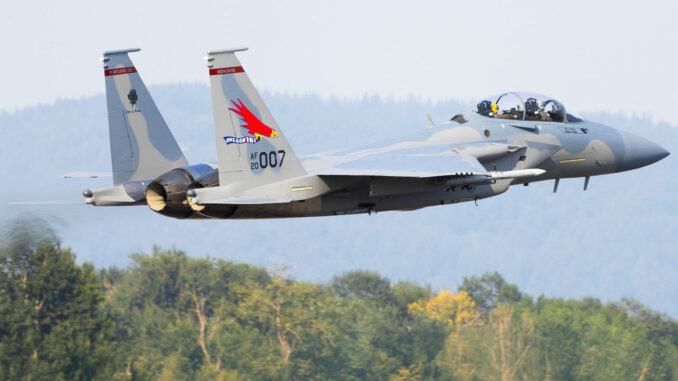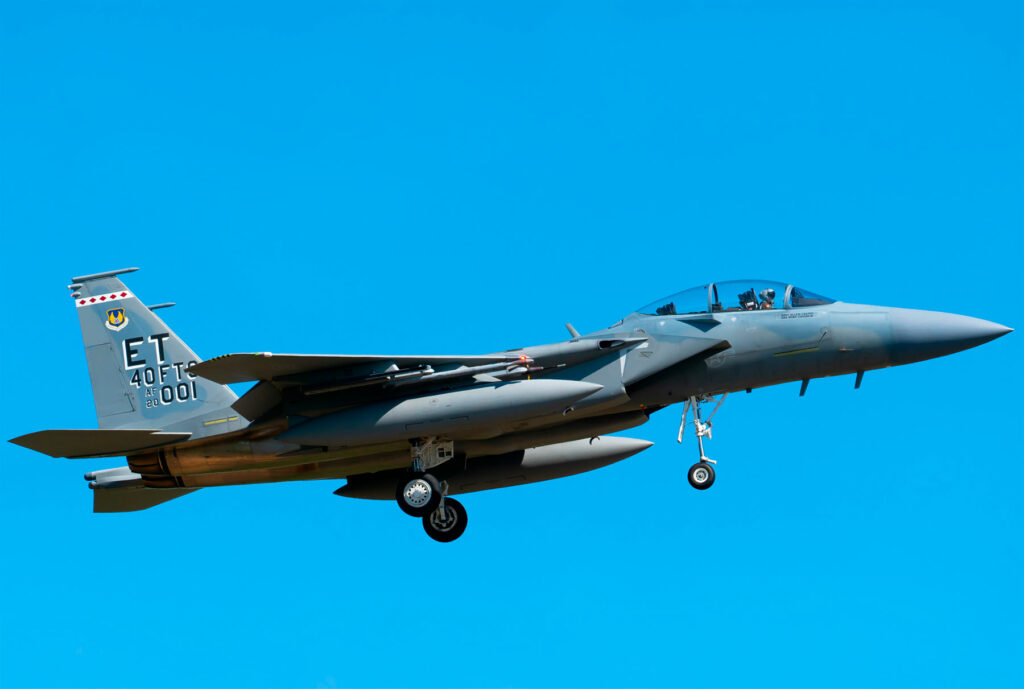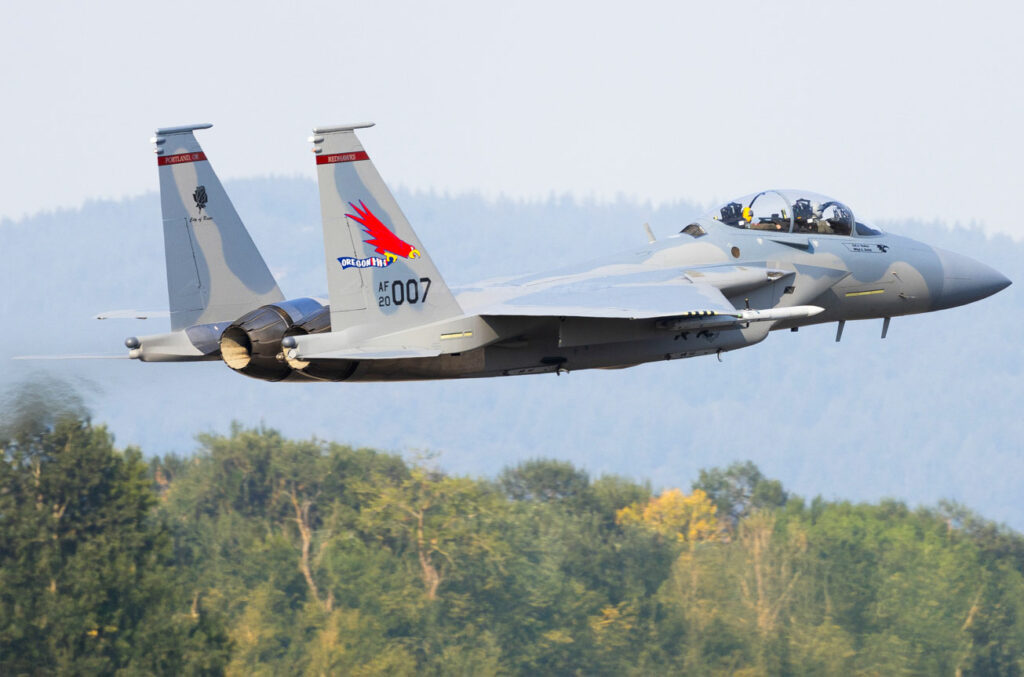
The F-15EX Eagle II is proving its operational effectiveness, but concerns remain about its survivability in the face of new long-range air threats.
The F-15EX Eagle II was recently evaluated by the Pentagon’s Office of Director of Operational Test and Evaluation (DOT&E). The results indicate notable operational effectiveness in air superiority missions, including against fifth-generation adversaries. However, concerns persist about its ability to survive in the face of emerging threats, notably long-range Chinese air-to-air missiles such as the PL-15 and PL-17. These developments underline the need for continuous evaluation and strategic adaptation to maintain the air advantage.

Performance evaluation of the F-15EX Eagle II
The F-15EX Eagle II, the latest evolution of the famous American fighter, has undergone a series of rigorous tests by DOT&E. According to the annual report published in November 2023, the aircraft demonstrated operational effectiveness in its air superiority roles, including offensive and defensive counter-air missions against adversaries simulating fifth-generation aircraft. These tests evaluated the F-15EX’s ability to detect, track and engage airborne threats at advantageous ranges, using on-board and remote systems for identification, while ensuring aircraft survivability.
The F-15EX features a modernized cockpit, incorporating a large touchscreen and the Digital Joint Helmet Mounted Cueing System (D-JHMCS). These enhancements provide pilots with greater situational awareness and an optimized user interface, making it easier to manage complex missions. Pilot feedback during testing has been positive, highlighting the cockpit’s improved ergonomics and functionality.
Concerns about survivability in the face of emerging threats
Despite these promising performances, the DOT&E report highlights concerns about the F-15EX’s survivability in the face of emerging threats, notably long-range air-to-air missiles developed by China. The PL-15, for example, is an active radar-guided missile with an estimated range of between 200 and 300 kilometers, surpassing that of the American AIM-120C/D AMRAAM missiles. In addition, China is developing the PL-17, a very long-range air-to-air missile, estimated at around 400 kilometers, designed to target high-value assets such as tankers and airborne surveillance aircraft.
These developments pose a significant challenge for the F-15EX, an improved fourth-generation aircraft, against adversaries equipped with fifth-generation technologies and long-range missiles. The report notes that initial operational testing did not include some advanced long-range threat weapons that become operational when the F-15EX is fielded, suggesting the need for additional testing to evaluate the aircraft in more complex threat scenarios.

Strategic implications and recommendations for the future
The growing capabilities of Chinese air-to-air missiles, such as the PL-15 and PL-17, are forcing the US Air Force to reassess its air combat strategies. The F-15EX, while performing well in current threat scenarios, may require further improvements to cope with these new threats. This could include the integration of advanced electronic warfare systems, the development of active and passive countermeasures, and improved long-range detection and tracking capabilities.
In addition, the development of new long-range air-to-air missiles, such as the AIM-260, is essential to maintain the balance of forces. The AIM-260 is designed to outperform the PL-15 in terms of range and performance, offering U.S. pilots an enhanced long-range engagement capability. The integration of such missiles on the F-15EX could offset some of the current limitations in the face of emerging threats.
Finally, the use of advanced simulation environments, such as the Joint Simulation Environment (JSE), is recommended to evaluate F-15EX performance against next-generation threats in complex mission scenarios. These simulations test the aircraft’s limits without the constraints of physical test ranges, providing a more complete understanding of its capabilities and modernization needs.
The F-15EX Eagle II demonstrated impressive performance during initial operational testing, confirming its essential role in the US Air Force’s fighter fleet. However, emerging threats, particularly long-range air-to-air missiles developed by potential adversaries, underline the need for continued vigilance and strategic adaptation. Investments in countermeasure technologies, the development of longer-range missiles and the use of advanced simulations will be crucial to ensure the F-15EX’s continued air superiority in the face of future challenges.
War Wings Daily is an independant magazine.